The most common birds in Europe
The most common birds in Europe Get to know the most common birds in Europe. In this continent, there are about 233 species. They vary in size, color and characteristics. They're unique birds. Today, we can find

The most common birds in Europe
Get to know the most common birds in Europe. In this continent, there are about 233 species. They vary in size, color and characteristics. They’re unique birds.
Today, we can find a great variety of them. However, many birds are displaced by climatic conditions. In 2014, there was a strong loss of birds in this area as a consequence of climate change and environmental pollution.
Mostly, many of the bird species displaced by climate change are the continent’s common birds. Around 90% of these losses come from 36 common species on the continent.
However, a large number of them remain representative. The common birds in Europe continue to provide an unparalleled tourist attraction and beauty to multiple European landscapes.
The 7 most common birds in Europe
Among the great variety of birds found on the European continent, we have prepared a list with the 7 most common birds. You will be able to identify these birds in national symbols from different countries in this area. Get to know some of them:
White stork (Ciconia ciconia)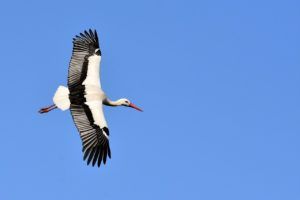
This is a large bird. It is popular in Germany, Belarus, Czech Republic, and Lithuania. It is easily recognized as it has some light feathers in the middle of its body and the rest of them are black. Its beak and long legs are orange. It feeds on fish, reptiles, insects, birds and small mammals, which it gets from soil or water sources.
Chicken (Gallus gallus)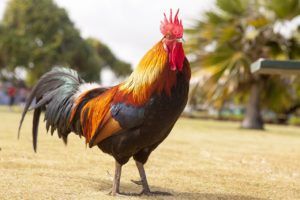
It originates from Southeast Asia but in France and Portugal, it is excessively common. It’s even on several sports shields. Mostly, it lives domesticated. It has feathers of various colors, from white to black, brown, beige to red. Males have a larger size and a pronounced red crest.
Spanish imperial eagle (Aquila adalberti)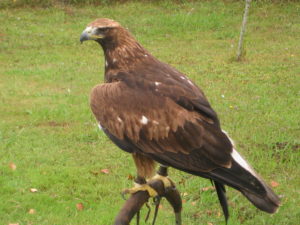
Its name comes in honor to Prince Adalbert of Bavaria and, it is the national bird of Spain because the largest population is located south of the Iberian Peninsula. It prefers to live near the rabbit which is its main food, so it lives in pine forests, coastal marshes, dunes, and mountains.
It has very dark brown plumage except for the shoulders and wings. Besides, It has a light-colored hooked beak and can measure about 85 centimeters. On the other hand, It is a monogamous species and reproduces between March and July, laying up to 5 eggs.
European robin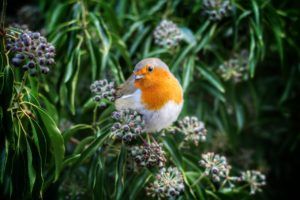
It lives in a large number of countries depending on the time of year, but it has been chosen by England to be the official representative. It is a very sociable and curious bird, it is accustomed to human presence and always watches who arrives in its territory. Its chirping is very melodic and similar to the nightingale.
The feathers on the chest and face are reddish or orange; the rest of its body is grey and both the eyes and beak are black. They are diurnal, so it feeds on invertebrates and sometimes berries and fruits.
White swan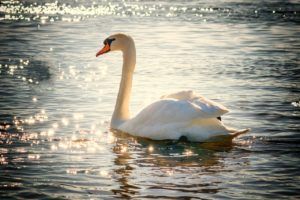
It has been selected by Denmark as its species. However, it is not only present in Scandinavia, according to the time of the year, it also migrates to the east of North America, east of Europe and Central Asia.
Such as its name, it has almost completely clear feathers with the only variant on the orange beak and a black spot under the eyes. Males are larger than females, and that is almost the only difference between their sex. Besides, when they’re young, their plumage is grayish.
Crested Tit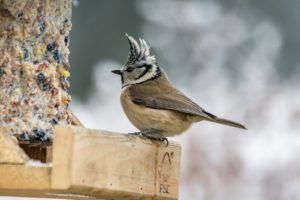
This is a small bird that feeds on insects and lives mainly in forests. It is easily recognized by its crest of feathers on the head, being representative of the species. It can be found in Western Europe, but it mainly lives in the Iberian Peninsula.
Rock partridge (Alectoris graeca)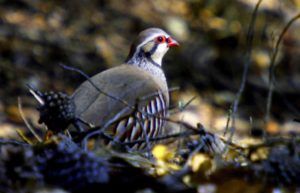
This is a particularly common species; it receives the scientific name of alectoris graeca. It is quite widespread in Europe, being found in semi-arid and rocky areas of the Balkans, the Alps, the Italian peninsula and Sicily. Its size varies according to the specimen, it normally measures between 33 and 35 cm.
The male and female are practically the same; however, the female is usually a little smaller than the male. Its plumage is grayish with a ring that surrounds its eyes and extends to its neck.
The most common birds in Europe
Remember! At sexadodeaves.com, we are specialists in sexing birds through DNA. In this way, it is possible to define the genre of your bird. You can also follow us on the networks: Facebook, Twitter, and Instagram and find all the information we have for you daily.

Max May 22, 2020
How could you omit Poland as one of the places storks summer?!
Sexado de Aves May 22, 2020
Hi Max, Sorry about it. Could you help us writing some lines about storks in Poland?
Anyway, many thanks for reading the Vlog.
Pingback:What Does Defender Mean In Japanese? June 15, 2022